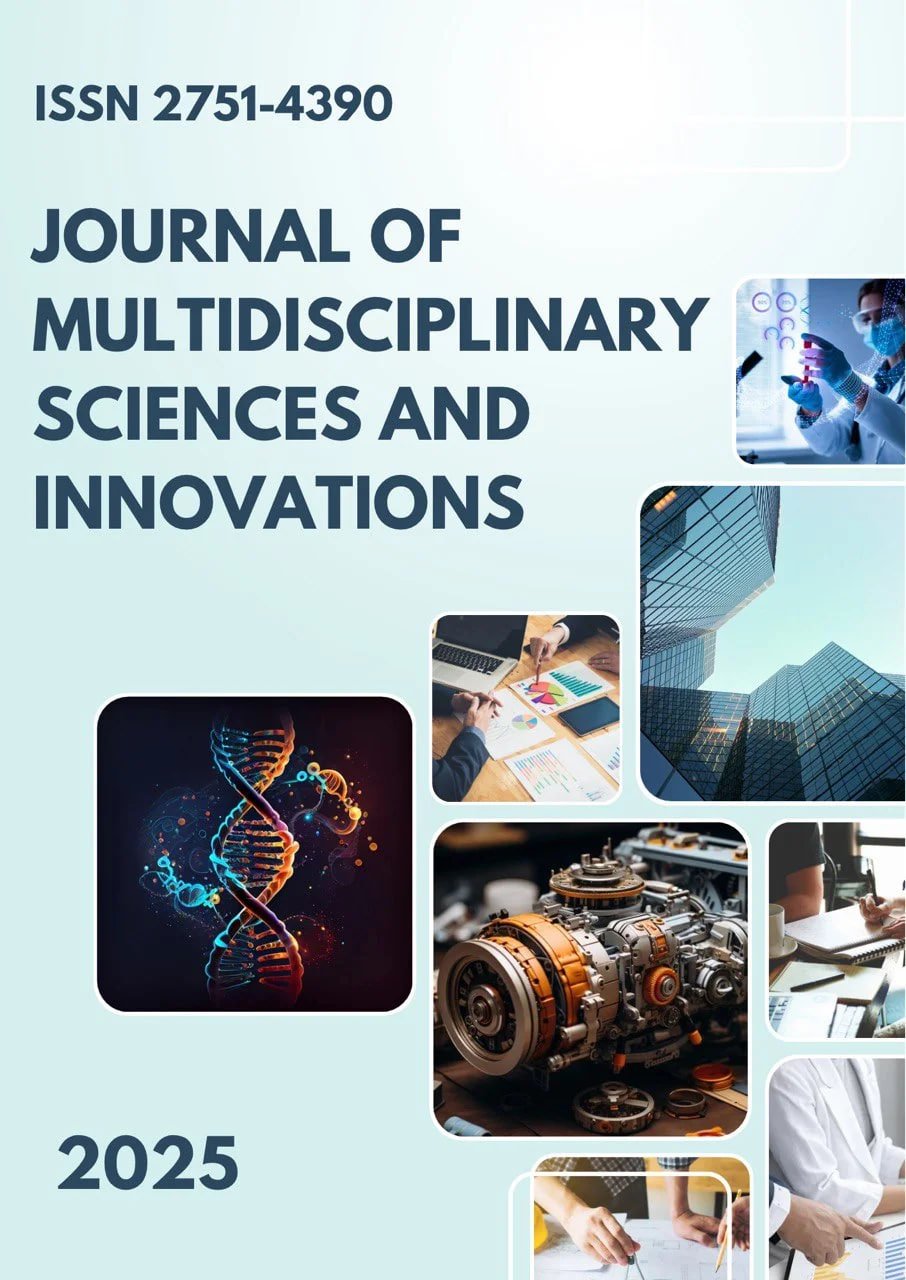ENHANCING PISTACHIO GROWTH: THE PHYSIOLOGICAL AND AGRONOMIC IMPACTS OF BIOSTIMULATORS ON VARIETAL PERFORMANCE AND YIELD
Main Article Content
Abstract
This study explores the physiological, biochemical, and agronomic impacts of biostimulants on pistachio trees, emphasizing their potential to enhance growth, yield, and stress tolerance across different varieties. Biostimulants, including microbial inoculants, plant extracts, and growth regulators, are shown to promote root development, nutrient absorption, and photosynthetic efficiency. They also improve pistachio resilience under abiotic stresses like drought and salinity by stimulating antioxidant activity and enhancing metabolic pathways. The findings underline the varietal specificity of responses, suggesting the need for targeted biostimulant applications. Moreover, the use of biostimulants supports more sustainable agricultural practices by reducing dependence on chemical fertilizers and enhancing soil health. The integration of these substances not only boosts pistachio productivity but also aligns with broader environmental and economic goals in modern horticulture
Downloads
Article Details
Section

This work is licensed under a Creative Commons Attribution 4.0 International License.
Authors retain the copyright of their manuscripts, and all Open Access articles are disseminated under the terms of the Creative Commons Attribution License 4.0 (CC-BY), which licenses unrestricted use, distribution, and reproduction in any medium, provided that the original work is appropriately cited. The use of general descriptive names, trade names, trademarks, and so forth in this publication, even if not specifically identified, does not imply that these names are not protected by the relevant laws and regulations.
How to Cite
References
1.Albasri, H. M., Mawad, A. M., & Aldaby, E. S. (2024). Enhancing Abiotic Stress Tolerance in Fruit Trees Using Microbial Biostimulants. Journal of Pure & Applied Microbiology, 18(3).
2.Alfosea-Simón, M., Simón-Grao, S., Zavala-Gonzalez, E. A., Cámara-Zapata, J. M., Simón, I., Martínez-Nicolás, J. J., ... & García-Sánchez, F. (2020). Application of biostimulants containing amino acids to tomatoes could favor sustainable cultivation: Implications for tyrosine, lysine, and methionine. Sustainability, 12(22), 9729.
3.AMRANE, A., & MIS, S. (2023). biostimulants effects on the germination of Cowpea (Vigna Unguiculata L.) under Salt Stress.
4.Batelja Lodeta, K., JEMRIĆ, T., JURIĆ, S., VUKOVIĆ, M., FRIGANOVIĆ, T., OČIĆ, V., & GADŽE, J. (2025). Enhancing organic fruit production: insights into biostimulant applications for sustainable growth, quality, and resilience in diverse agroecological settings. Journal of Central European Agriculture, 26(1), 229-239.
5.Benaffari, W., Boutasknit, A., Anli, M., Ait-El-Mokhtar, M., Ait-Rahou, Y., Ben-Laouane, R., ... & Meddich, A. (2022). The native arbuscular mycorrhizal fungi and vermicompost-based organic amendments enhance soil fertility, growth performance, and the drought stress tolerance of quinoa. Plants, 11(3), 393.
6.Beyá-Marshall, V., Quintanilla, F., Seguel, O., Kremer, C., Vargas, E., & Fichet, T. (2024). Mitigation of salinity stress in ‘Chandler’walnuts through the application of Ascophyllum nodosum extracts to soil: effects on growth, yield, and its impact on physical and biological soil properties. Journal of Applied Phycology, 36(5), 2935-2949.
7.Calvo, P., Nelson, L., & Kloepper, J. W. (2014). Agricultural uses of plant biostimulants. Plant and soil, 383(1), 3-41.
8.Gupta, S., Novák, O., Kulkarni, M. G., Doležalova, I., Van Staden, J., & Doležal, K. (2024). Unleashing the potential of biostimulants in stimulating pollen germination and tube growth. Journal of Plant Growth Regulation, 1-32.
9.Hassanein, R. A., Hussein, O. S., Abdelkader, A. F., Farag, I. A., Hassan, Y. E., & Ibrahim, M. (2021). Metabolic activities and molecular investigations of the ameliorative impact of some growth biostimulators on chilling-stressed coriander (Coriandrum sativum L.) plant. BMC Plant Biology, 21(1), 361.
10.Iqbal, M., & Qureshi, A. A. (2021). Biostimulants and salinity: Crosstalk in improving growth and salt tolerance mechanism in Fennel (Foeniculum vulgare). Review of Agricultural and Environmental Studies-Revue d'Etudes en Agriculture et Environnement (RAEStud), 4(1), 8-13.
11.Khalid, F., Rasheed, Y., Asif, K., Ashraf, H., Maqsood, M. F., Shahbaz, M., ... & Haider, F. U. (2024). Plant biostimulants: Mechanisms and applications for enhancing plant resilience to abiotic stresses. Journal of Soil Science and Plant Nutrition, 24(4), 6641-6690.
12.Kilic, N. (2024). Improvement in plant growth, yield, and fruit quality with biostimulant treatment in organic strawberry cultivation. HortScience, 59(8), 1165-1171.
13.Nikoogoftar-Sedghi, M., Rabiei, V., Razavi, F., Molaei, S., & Khadivi, A. (2023). The effect of foliar application of Ascophyllum nodosum (L.) Le Jol. seaweed extract on biochemical traits related to abiotic stresses in pistachio (Pistacia vera L. cv. Kaleh-Ghoochi). BMC Plant Biology, 23(1), 635.
14.Rafiee, H., Naghdi Badi, H. A., Mehrafarin, A., Qaderi, A., Zarinpanjeh, N., Sękara, A., & Zand, E. (2016). Application of plant biostimulants as new approach to improve the biological responses of medicinal plants-A critical review. Journal of Medicinal Plants, 15(59), 6-39.
15.Ranjbar, A., Moradinezhad, F., & Panahi, B. (2025). Roles of Micronutrients and Plant Growth Regulators on Abiotic Stresses Management of Pistachio Trees: A Review. Journal of Plant Growth Regulation, 1-29.

